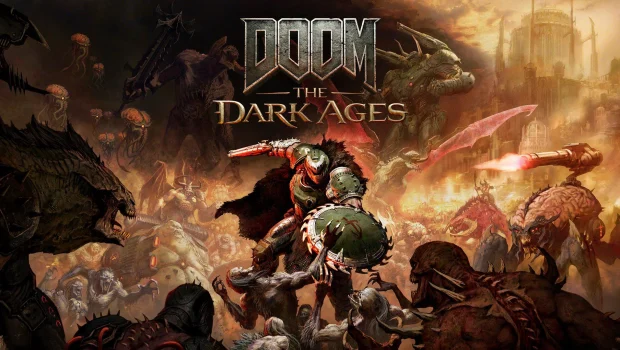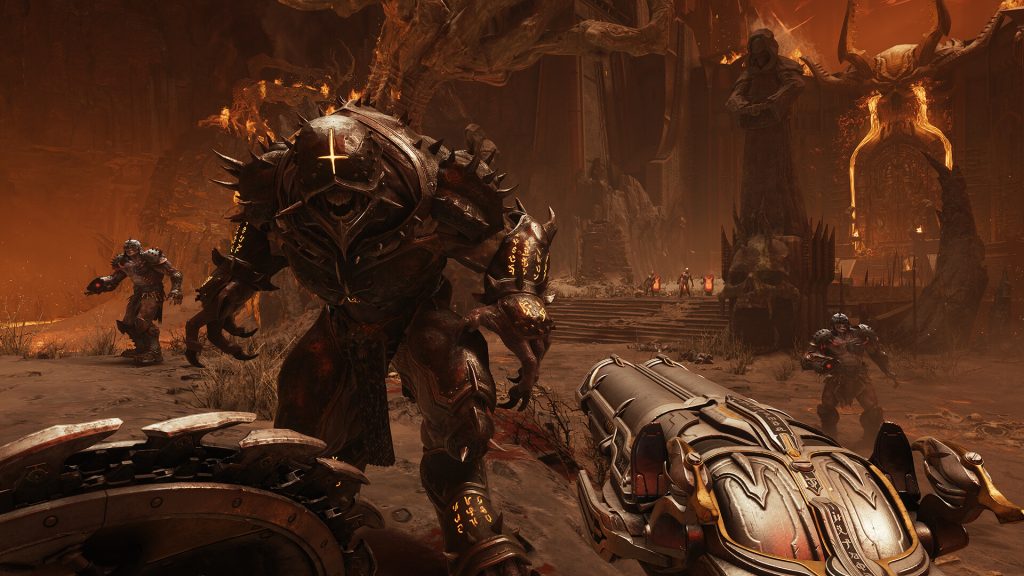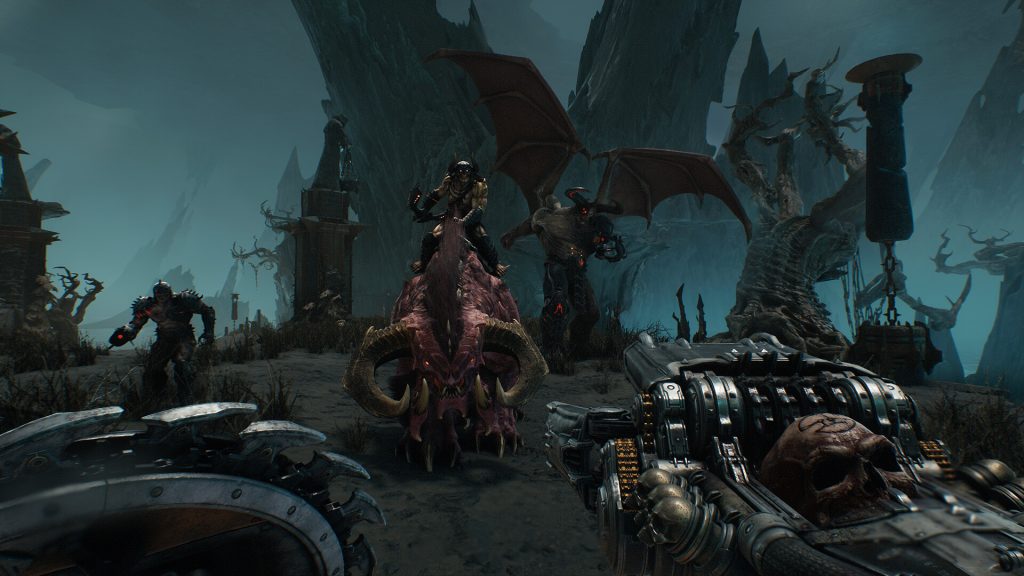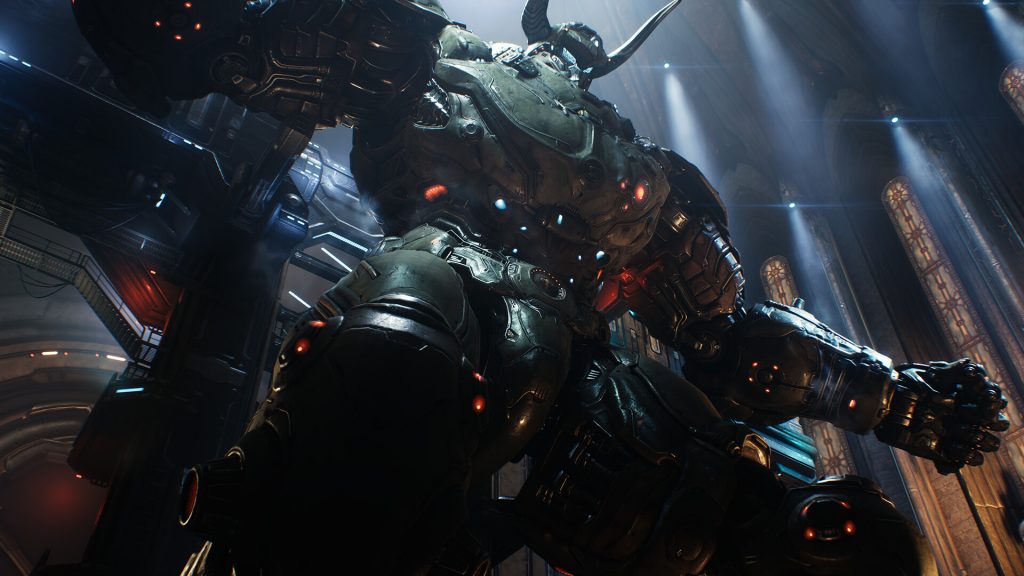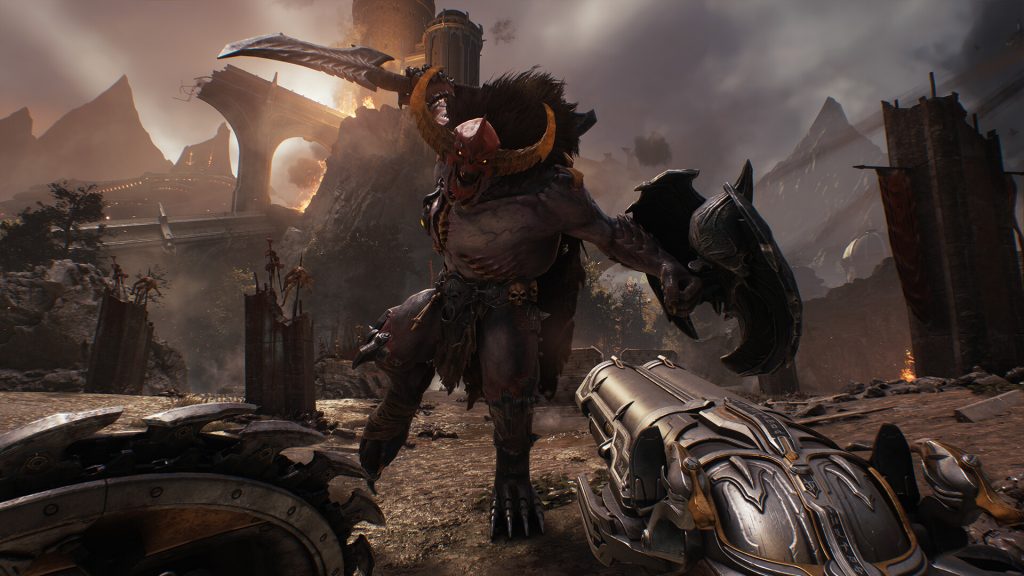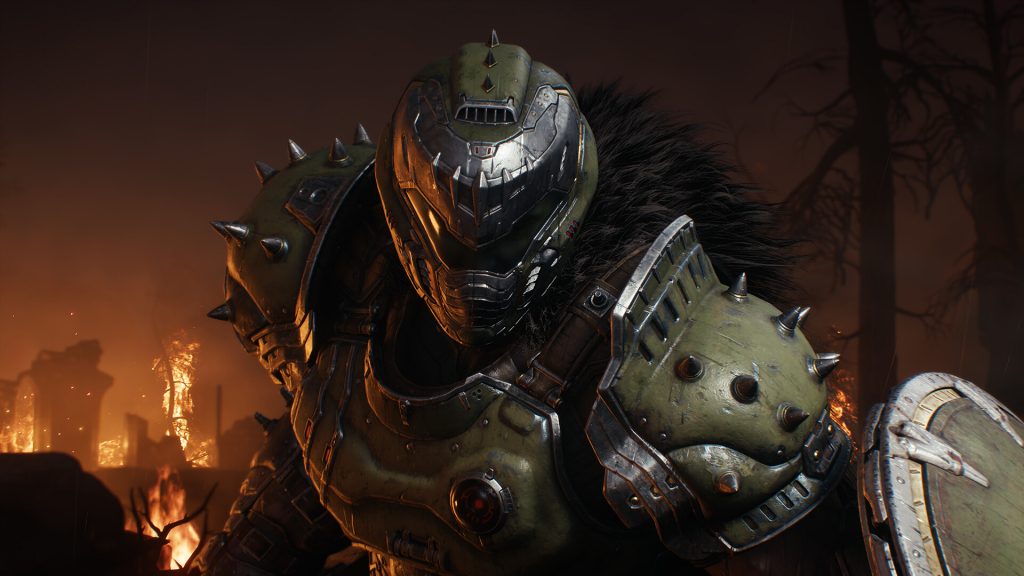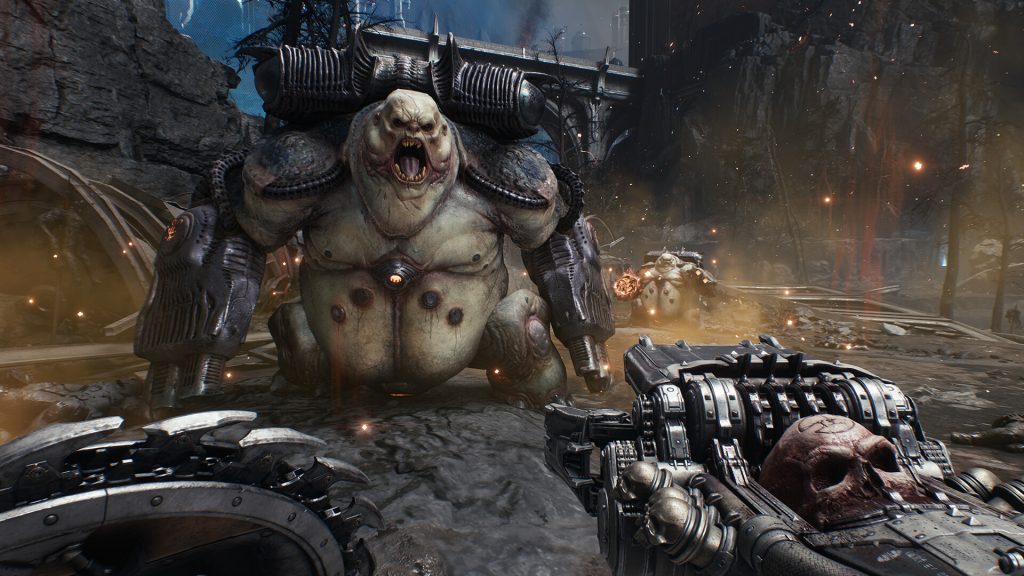DOOM: The Dark Ages PS5 Review
Rip & Tear!
Summary: DOOM: The Dark Ages is a fantastic experience from start to finish. Mixing up the gameplay of its predecessors drastically, while still feeling like DOOM.
4.8
The modern reboots of DOOM that started in 2016 and followed up with DOOM Eternal in 2020 ended up being my favourite games of those years, and even going so far as to name DOOM (2016) as my favourite game of the generation.
So, it goes without saying that id Software’s latest entry into the franchise, DOOM: The Dark Ages, had me excited to dive back into the boots of the Slayer and start to rip and tear anew.
The Dark Ages is a prequel to the prior games, showcasing the war between Hell and the Maykrs, and the Sentinels that fight for them. It’s a story that mostly exists to strengthen the plot of Eternal, filling in a lot of the blanks that the game’s narrative left surrounding the universe and its inhabitants. We’re introduced to the story behind the Slayers’ servitude to and subsequent withdrawal from Maykr’s rule, and some lore reasons as to why he’s a barely contained vessel of rage. Not that any reasons were necessary, demons existing was probably reason enough.
There’s a much heavier emphasis on story this time around. Most of the game’s levels are bookended with cutscenes that explain what’s going on and move the plot forward, with some lasting upward of a few minutes rather than the incredibly brief ones of Eternal and the static exposition dumps (albeit in gameplay) of 2016. Gameplay itself, however, is largely uninterrupted, with only very minor moments cropping up from time to time. This larger focus on story gives the game a significantly different feel from past releases. In practice, it’s fundamentally the same, but the framing gives it a different vibe, which honestly reminded me of past Halo games more than anything else.
When it comes to the gameplay, id have mixed up the formula quite a bit. Eternal was an evolution of DOOM (2016) in almost every respect. Movement speed and general mobility were turned up to eleven, the devastating arsenal grew and was refined, and the glory kill system was expanded upon, making them even quicker and more useful in combat. The Dark Ages takes an entirely different approach to combat, with what initially seems to be a slower and more traditional approach to FPS gameplay. This is deceptive, though. Upon further inspection, combat is just quick, frantic, and visceral as Eternal, just in vastly different ways.
What’s most noticeable is that the Slayer’s movement speed is somewhat slower than in previous entries. At least at first glance. While it’s true that walking speed does feel reduced, sprinting (which is unlimited and can be set to always on in the options) has the Slayer moving around at a velocity somewhere approximating the speed of sound. Mobility is further enhanced very early in the game with the addition of the shield, this being the big, new addition to the franchise.
It’s primarily used for blocking attacks as you’d expect, with L2 raising it whenever necessary. Aside from this standard implementation of a shield, it enables a host of new options for offense, defence, mobility, and light puzzle solving. The first of the new abilities that it grants is a charge. While blocking, nearby enemies in range are targeted, and by hitting R2, the Slayer is propelled towards them at immense speed, causing significant damage on impact. This is used extensively throughout the campaign, both for combat encounters and some light puzzle-solving. This, combined with the ridiculously high sprint speed, makes the Slayer incredibly mobile, able to close huge distances in seconds.
The other main use of the shield is to facilitate the parrying system. Parrying to The Dark Ages is what dashing was to Eternal. It’s integral to the design of the game and the flow of the combat. Enemies typically attack in two ways, visualised by orange and green. Red attacks can be blocked, green attacks can be blocked or parried. Hitting L2 during the small window before an attack is about to land triggers a parry.
If successful, this fires projectiles back towards the sender or prevents damage from melee attacks, usually stunning the attacker in either case, opening a window for increased damage. On tougher, late-game enemies, attacks often come in chains with multiple needing to be parried in quick succession. This forms the basis of DOOM: The Dark Ages’ combat. The constant switching between aggressive and defensive play styles depends on what is being thrown at you at the time.
Parrying thankfully has a generous window for most attacks, and it didn’t take too much time to get used to the system. Once you get comfortable with how each of the individual mechanics and enemies work, as familiarity with your arsenal grows, the game shifts from being a fight for survival against overwhelming odds to the ultimate power fantasy. I spent the early game being cautious around enemies, especially when the more powerful variants get introduced, carefully waiting for openings between attacks for a chance to strike. As time went on, I started playing far more aggressively, pushing enemies into their stunned states at the first possible opportunity, relishing larger battles with dozens of enemies around at once.
Each of the 22 missions falls roughly into three categories, each with varying gameplay. The most prevalent of these are the standard on-foot levels where Slayer marches around relatively linear levels, effectively very elaborate hallways that connect wider, more open arenas for larger battles. These are most similar in structure to those found in DOOM Eternal. Occasionally, you’re thrown into much larger and more open spaces and left to complete objectives at your own pace. These maps make the most of the increased enemy count, often throwing hordes at the player at once until they’re all defeated, or a designated leader has been taken out, with foes respawning until this happens.
A small selection of the more open levels makes use of Serrat, a cybernetic dragon. This monstrous amalgamation of flesh and machine can be flown around the map to go from objective to objective, with the Slayer hopping off at key locations, reverting to traditional on-foot gameplay. It’s very reminiscent of levels in Halo that utilised the Pelican to transport players around the map. It does a good job of breaking up the gameplay, adding a little variety to proceedings. It isn’t especially well fleshed out mechanically, with combat interactions boiling down to locking onto a station target (for the most part), holding down R2, and occasionally dodging incoming attacks with circle. None of the sequences outstay their welcome, however, and it does a great job of portraying the scale that some of these battles take place at.
The final gameplay variation is spent piloting an Atlan. These are hulking great machines that resemble the Slayer in appearance, albeit at several hundred times the height. This is perhaps where gameplay is at its most simple. Atlan levels are typically very short and consist of a linear stage where the player thunders around punching giant demons to death and occasionally using a very large minigun to get the job done. They’re not unfun, but their brevity probably works in their favour, as if they went on for any longer, they may become repetitive quickly.
Another thing that can be said about the gameplay is the emphasis on resource management, or rather, The Dark Ages moves away from it. DOOM Eternal has a heavy emphasis on this and makes weapon switching and utilising its feature set to keep stocked up on ammo essential. This is far less apparent in The Dark Ages. While guns don’t typically carry a huge amount of ammo, it’s never really a problem. Maps are littered with pickups, and enemies disgorge ammo at every opportunity. As a result of this, weapon switching is far less necessary, and parry + super shotgun counters pretty much everything in the game, at least on UV difficulty.
There’s a sizeable campaign here, I managed to get to the end on ‘Ultra Violence’ difficulty in a little over 17 hours. Depending on the difficulty selected, player skill, and how much time is spent looking for secrets and collectables (of which there are a lot), this could easily be extended by another couple of hours.
Speaking of difficulty, this is another area that id has overhauled compared to its predecessors. As before, there are several preset difficulty levels (including a new one below Ultra-Nightmare). Where things differ, though, is the level at which these difficulty settings can be tweaked to fully customise the experience. Everything from the size of the parry window to how aggressive enemies are, and how much damage both parties take and receive, can be tweaked.
Even the game speed can be increased or decreased by 50% in either direction to change the experience. This is tied into a great set of accessibility options, allowing for colour-blindness, subtitles, and the HUD, among other things, to be considered and tweaked. The FOV can even be changed, which isn’t seen too often in console ports.
Id have always been masters of optimisation, and DOOM: The Dark Ages is no exception. Running on id Tech 8, my time with the game was flawless. In 20 or so hours, the experience was never anything less than perfect from a performance perspective, at no point did I notice a single dropped frame, with the game running at 60fps the entire time. There’s no choice between performance and fidelity modes, either. In terms of fidelity, The Dark Ages looks great.
The visuals are sharp, there’s a lengthy draw distance to make the most of the open areas, and maps are lush with detail. A surprising amount, as it turns out. Many of the incidental wooden structures that dot many of the maps are fully destructible, deforming realistically as they take impact. Some of the more natural areas are filled with plant life, and even Hell has what appears to be decaying grass on the ground.
The one real criticism I have of the visuals is with the colour palette. The previous two games, and DOOM Eternal especially, had quite a lot of vibrant colours to them; they usually always had an image that popped, even if it did lean on red a little much in some situations. The Dark Ages leans into a darker, more muted and desaturated colour palette. It’s still very striking in a lot of areas, but it doesn’t pop as much as Eternal did.
This time around, the score is handled by Finishing Move, and for the most part, they’ve done an excellent job with the soundtrack. There’s nothing quite as iconic as ‘The Only Thing They Fear Is You’ from Eternal, or ‘Rip and Tear’ from DOOM (2016), but it’s a great soundtrack, nonetheless. Each of the weapons is sufficiently impactful; the super shotgun in particular sounds like a volcano erupting every time it’s fired. Voice acting is also handled well, with each of the voiced cutscenes being well acted and directed. The Slayer even speaks! (once).
Final Thoughts?
DOOM: The Dark Ages is a masterclass of FPS gameplay and design. It would have been very easy for id to just make ‘Eternal but more’ for any sequel, instead choosing to completely mix up the formula and create a totally new experience that still manages to feel like DOOM. Its combat is incredibly rewarding to master and has a layer of depth not often seen in first-person shooters, and quite possibly may have become my favourite of the three games.
The lengthy campaign has a decent amount of variety in its level design and theming, and there are enough secrets and hidden collectables to find to keep completionists occupied for a while.
DOOM: The Dark Ages has jumped to the top spot in my game of the year list, and I can’t see anything knocking it off anytime soon.


